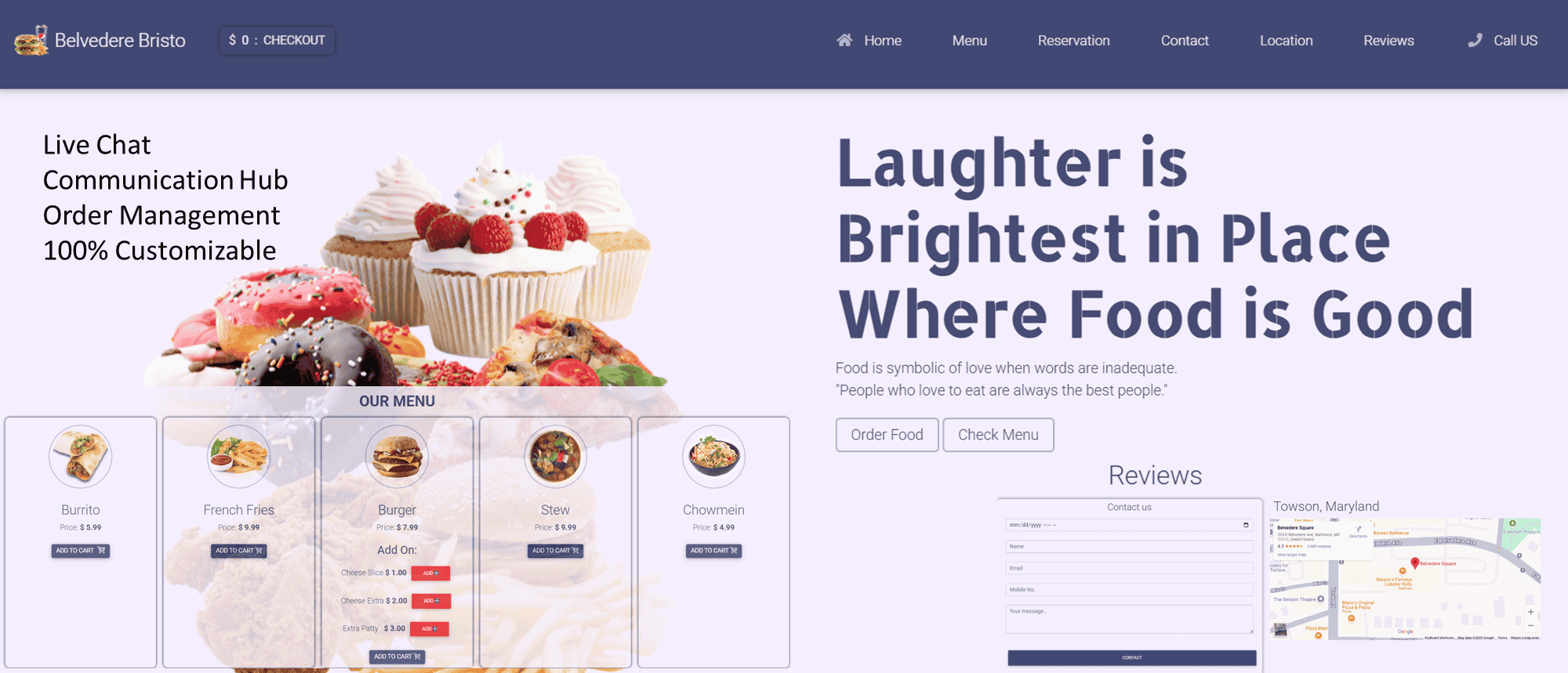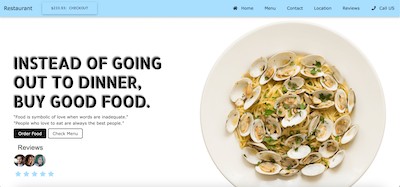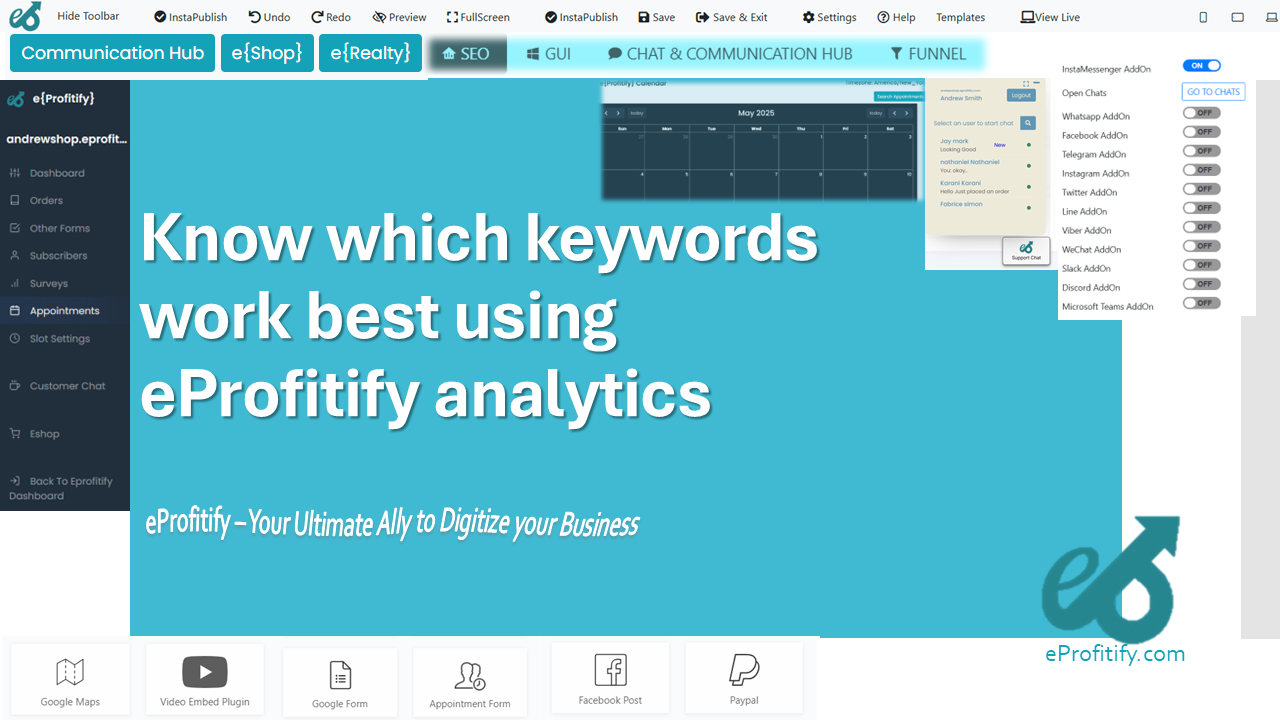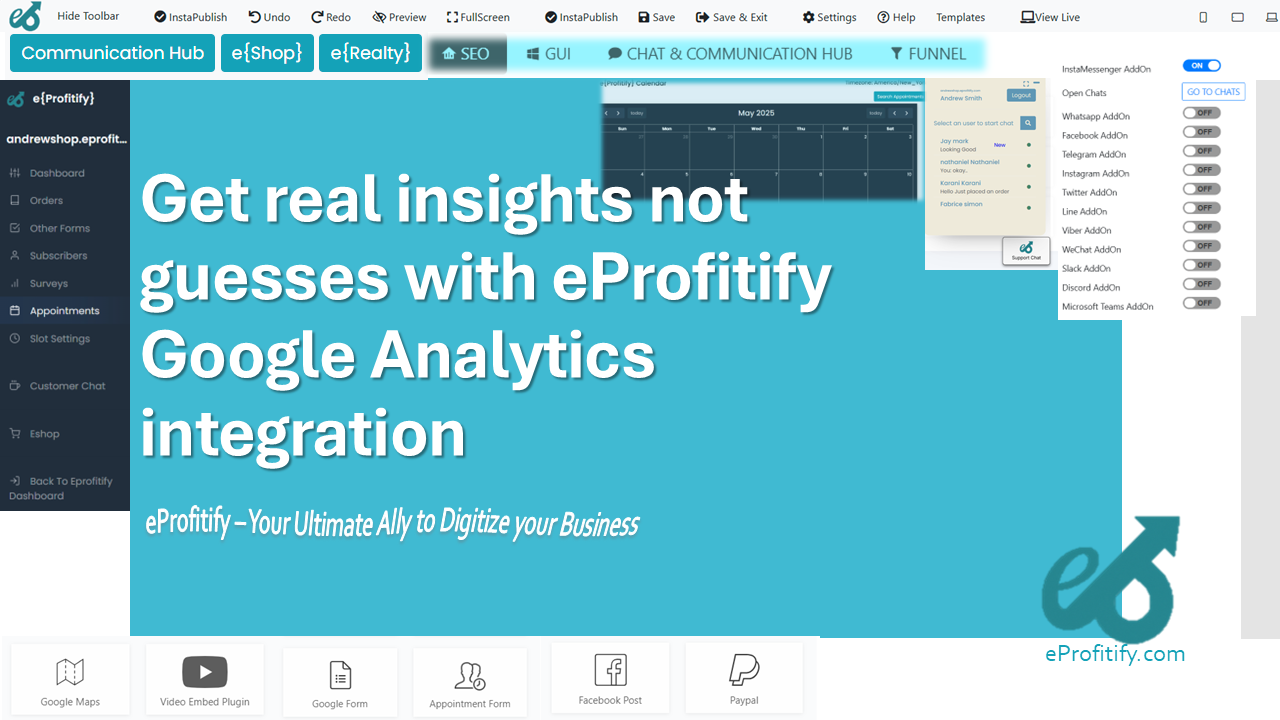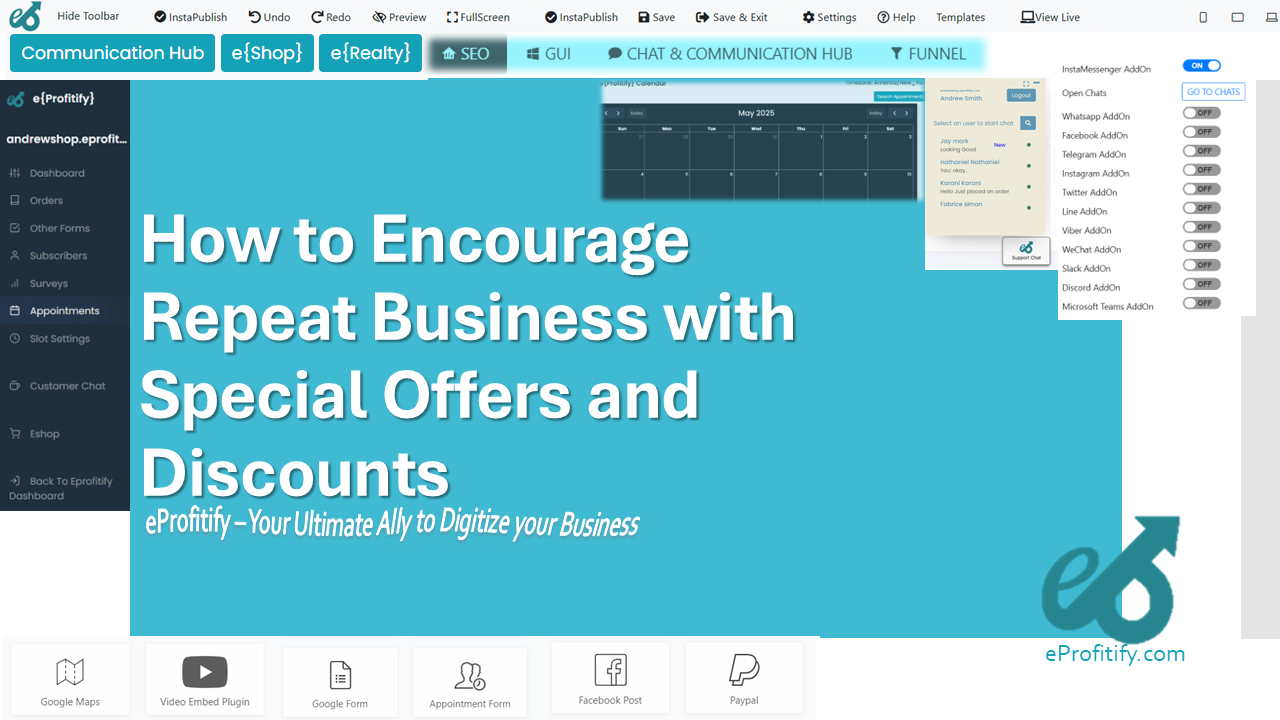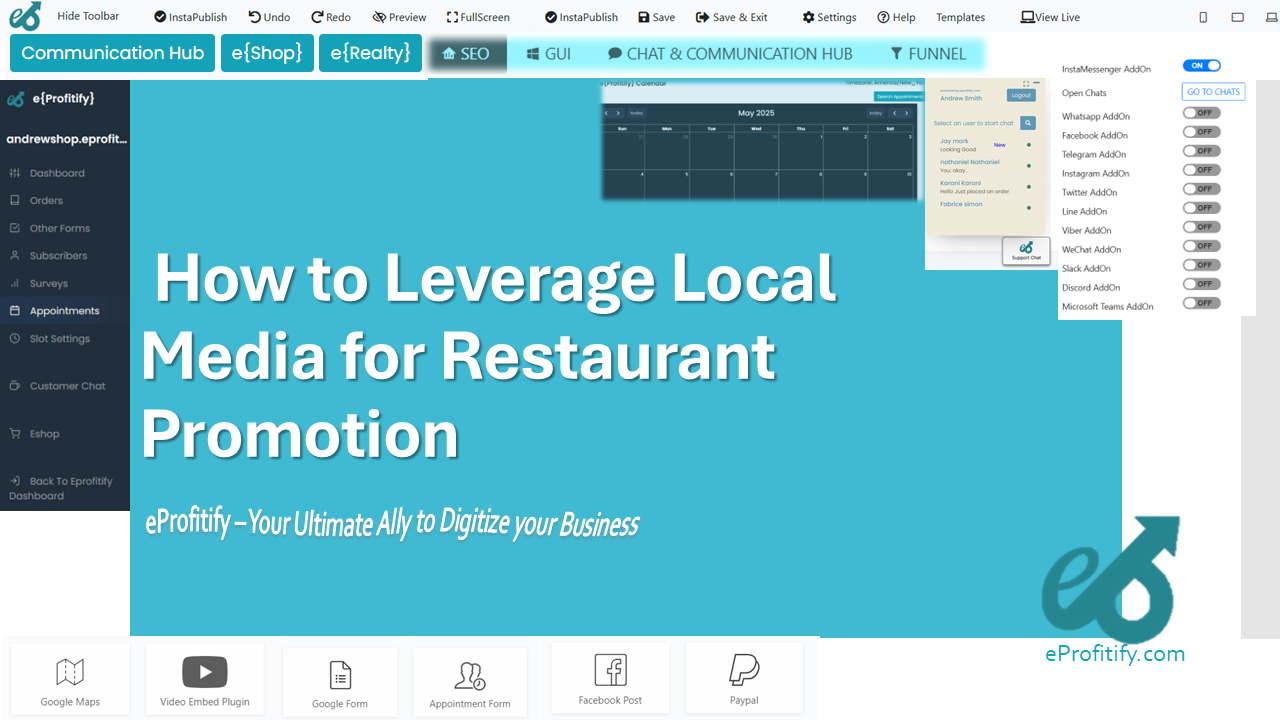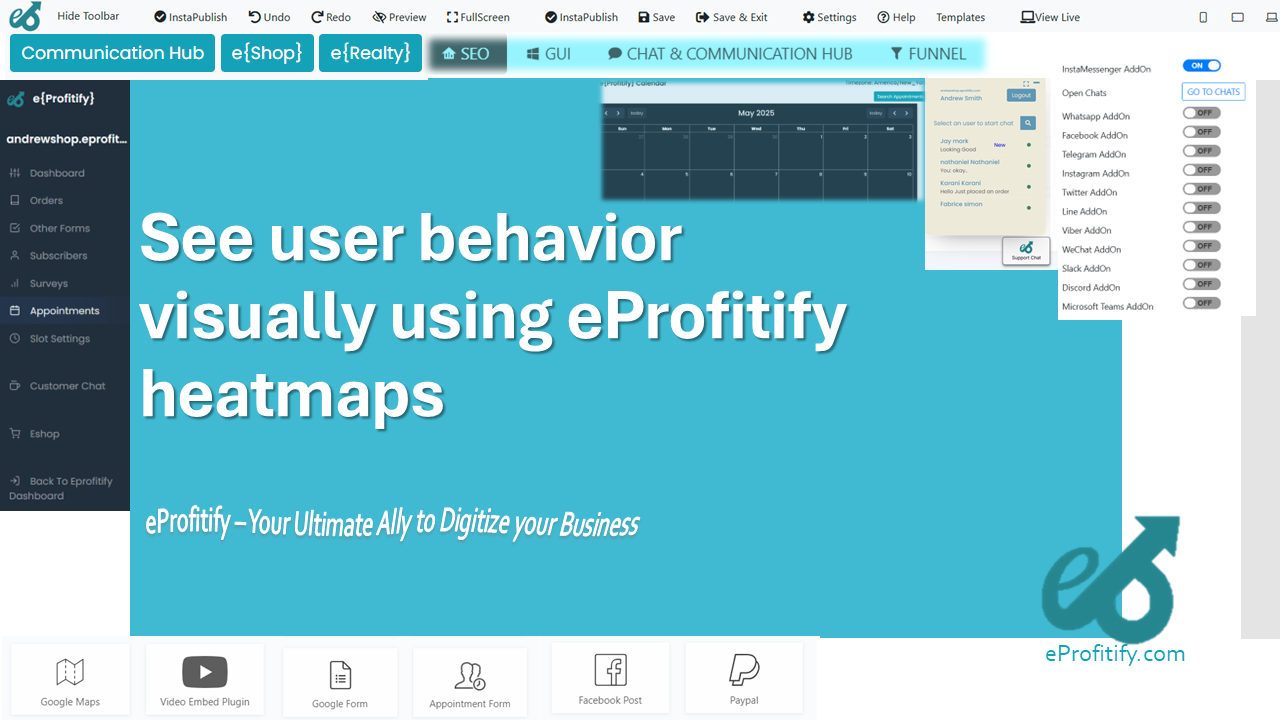How to Identify Searcher Intent and Align Content Accordingly
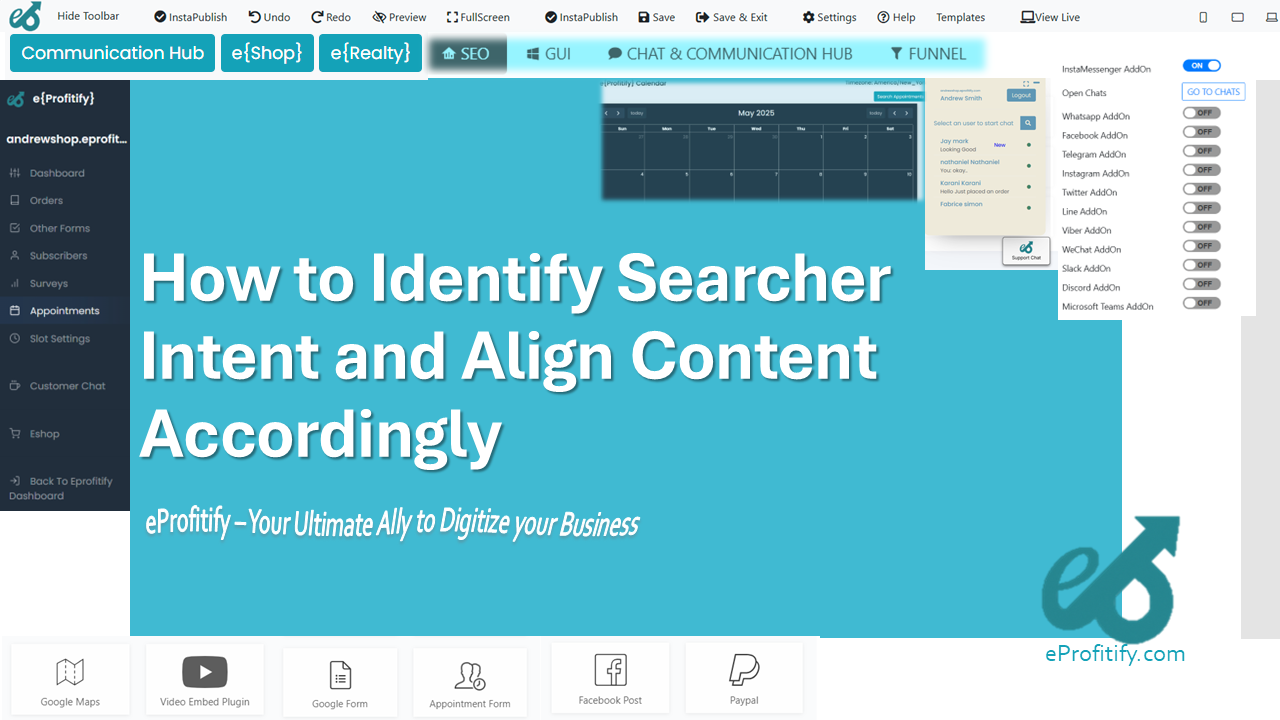
Schedule a LIVE Zoom call with an eProfitify Expert.
How to Identify Searcher Intent and Align Content Accordingly
Understanding searcher intent—the underlying purpose behind a user’s query—is critical for creating content that ranks well and drives meaningful engagement. Approximately 70% of marketers prioritize optimizing for search intent, recognizing its role in improving conversion rates and reducing bounce rates. With Google’s algorithms increasingly prioritizing user-centric content, aligning your strategy with searcher intent is no longer optional. This guide explores actionable strategies to decode intent and deliver targeted content, while highlighting how tools like Eprofitify, a leading website management platform, streamline this process.
The Four Types of Searcher Intent
-
Informational Intent
Users seek answers, tutorials, or general knowledge. Queries like “how to fix a leaky faucet” or “what is SEO” fall here.- Statistic: 80% of all searches are informational.
- Content Strategy: Create blogs, guides, or videos that address questions clearly.
-
Navigational Intent
Users aim to visit a specific website (e.g., “Facebook login”).- Statistic: 10% of searches are navigational.
- Content Strategy: Optimize metadata for brand terms and ensure homepage/service pages are easily accessible.
-
Transactional Intent
Users are ready to purchase or take action (e.g., “buy wireless headphones”).- Statistic: 5–10% of searches are transactional.
- Content Strategy: Develop product pages, CTAs, and landing pages with clear conversion pathways.
-
Commercial Investigation
Users compare products/services before purchasing (e.g., “best CRM tools 2023”).- Content Strategy: Publish comparison guides, case studies, or testimonials.
How to Identify Searcher Intent
1. Analyze Keyword Context
- Use tools like Google Keyword Planner or SEMrush to categorize keywords by intent. Long-tail phrases (e.g., “how to...”) indicate informational queries, while “buy” or “discount” signal transactional intent.
2. Study SERP Features
Google’s results page reveals intent through featured snippets, product carousels, or video results. For instance, a query showing shopping ads likely has transactional intent.
3. Leverage Analytics
Track user behavior metrics like bounce rate and time-on-page. Pages aligned with intent see 2–3x higher engagement, while mismatched content suffers.
4. Monitor Competitors
Analyze top-ranking content for target keywords. A cluster of product pages versus blog posts indicates Google’s interpretation of intent.
Aligning Content with Searcher Intent
-
For Informational Queries
- Solution: Comprehensive guides, FAQs, or infographics.
- Example: A roofing company could create a video tutorial on “how to detect roof damage.”
-
For Transactional Queries
- Solution: Optimize product pages with user reviews, pricing, and urgency-driven CTAs.
- Statistic: Pages with clear CTAs convert 80% faster.
-
For Commercial Investigation
- Solution: Comparison charts or case studies.
- Example: A SaaS company comparing its CRM features against competitors.
-
For Navigational Queries
- Solution: Ensure brand-name pages load quickly and include contact/FAQ sections.
How Eprofitify Enhances Content Strategy
Eprofitify, a versatile website management platform, simplifies aligning content with searcher intent through integrated tools:
-
CRM Integration
Track customer interactions to identify recurring queries or pain points, informing content creation. -
Ecommerce Tools
Create SEO-optimized product pages with mobile-responsive templates, improving visibility for transactional searches. -
Analytics Dashboard
Monitor bounce rates and click-through rates to refine content performance. Sites using intent-driven strategies reduce bounce rates by up to 50%. -
Appointment Management
For service-based businesses, embedded booking systems convert navigational searches (e.g., “schedule dental appointment”) into conversions. -
Instant Messaging
Engage users in real-time to clarify intent, reducing exit rates. -
SEO Plugins
Auto-generate meta tags and keyword suggestions to align content with search trends.
By centralizing content creation, SEO, and user engagement, Eprofitify helps businesses deliver personalized experiences that mirror searcher needs.
Conclusion
Decoding searcher intent requires a blend of data analysis, content creativity, and agile tools. With 50% of users more likely to engage with intent-aligned pages, the ROI of this approach is undeniable. Platforms like Eprofitify amplify these efforts by unifying SEO, CRM, and ecommerce capabilities, ensuring businesses stay ahead in a competitive digital landscape. By prioritizing intent, brands build trust, boost conversions, and future-proof their content strategies.
